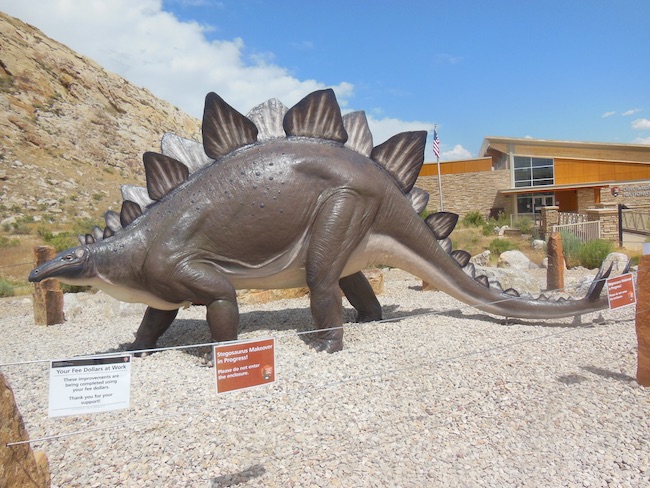| Dinosaurs Articles |
| Triassic Period |
| Jurassic Period |
| Cretaceous Period |
| Extinction |
| Morrison Formation |
| Bone Wars |
| Dinosaurs Profiles |
| Tyrannosaurus Rex |
| Brontosaurus |
| Diplodocus |
| Archaeopteryx |
| Triceratops |
| Stegosaurus |
| Allosaurus |
| Velociraptor |
Stegosaurus |
|||
Discovery and TaxonomyDiscovered in the late 19th century by American paleontologist Othniel Charles Marsh, Stegosaurus earned its name, which translates to "roof lizard" or "covered lizard," owing to the peculiar arrangement of plates along its back. Belonging to the family Stegosauridae, Stegosaurus shared its Jurassic habitat with other notable dinosaurs like Allosaurus and Apatosaurus. Physical Features1. Dorsal Plates:One of the most distinctive features of Stegosaurus is its double row of large bony plates that ran along its back. These plates, which varied in size, were embedded in the skin and likely served a thermoregulatory function, helping to regulate the dinosaur's body temperature by absorbing or dissipating heat. 2. Spiked Tail (Thagomizer):The spiked tail of Stegosaurus, known as the "thagomizer," is a formidable defensive adaptation. Comprising four pairs of large spikes, the thagomizer acted as a deterrent against predators. Fossil evidence suggests that these spikes were sharp and could inflict serious damage. 3. Quadrupedal Stance:Stegosaurus moved on four sturdy legs, adopting a quadrupedal stance. Its relatively small head housed a beak for grasping vegetation, and its large, flat teeth were adapted for chewing tough plant material. Its brain was thought to be the size of a plum. 4. Size and Anatomy:Stegosaurus was a sizable dinosaur, with some species reaching lengths of up to 30 feet (9 meters). It weight about 10,000 pounds. Despite its imposing appearance, it was likely a peaceful herbivore, utilizing its defensive features as a deterrent rather than for aggressive purposes. Behavior and LifestyleStegosaurus is believed to have been a low-browsing herbivore, feeding on ferns, cycads, and other Jurassic vegetation. The social behavior and lifestyle of Stegosaurus remain topics of speculation among paleontologists. While it is unclear whether they exhibited herding behavior or lived solitarily, the presence of defensive features suggests a need for protection against potential predators. Jurassic Ecosystems and CoexistenceStegosaurus inhabited the lush landscapes of the Late Jurassic, sharing its environment with a diverse array of dinosaurs, including long-necked sauropods like Brachiosaurus and predators like Allosaurus. This period was marked by flourishing plant life, contributing to a rich and varied ecosystem. Legacy and Fossil RecordThe fossil record of Stegosaurus has provided crucial insights into the anatomy, behavior, and paleoecology of this Jurassic giant. Stegosaurus remains one of the most well-known and studied dinosaurs, and its distinctive features continue to capture the imagination of scientists and dinosaur enthusiasts alike. |
